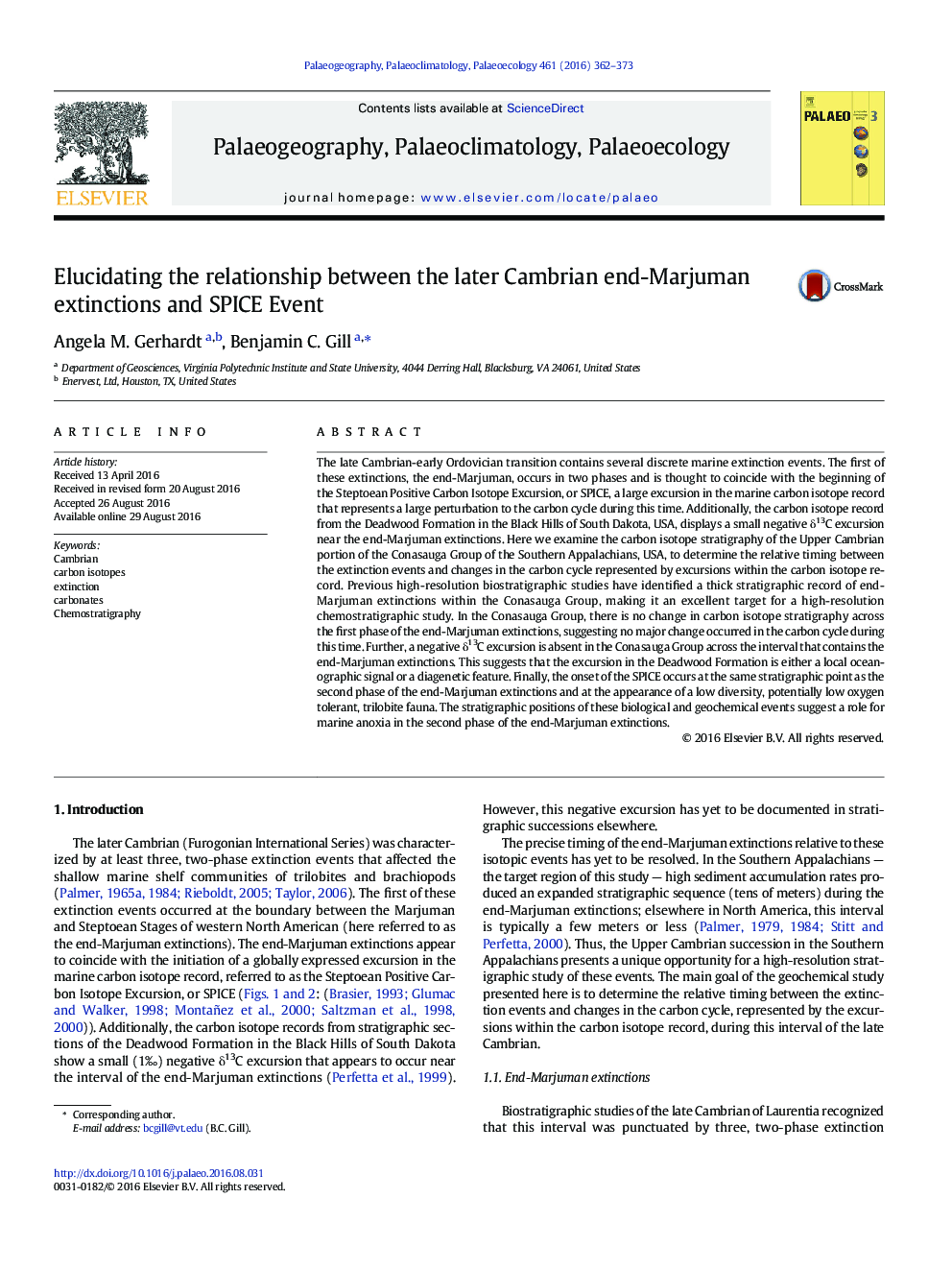| کد مقاله | کد نشریه | سال انتشار | مقاله انگلیسی | نسخه تمام متن |
|---|---|---|---|---|
| 4465544 | 1622130 | 2016 | 12 صفحه PDF | دانلود رایگان |
• No δ13C excursions occur across the first phase of the end-Marjuman extinctions
• No negative δ13C excursion occurs locally during the end-Marjuman extinctions
• Beginning of the SPICE occurs with the second phase of the end-Marjuman extinction
• Proliferation of olenid trilobites occurs immediately after the start of the SPICE
• Marine anoxia may coincide with the second phase of the end-Marjuman extinctions
The late Cambrian-early Ordovician transition contains several discrete marine extinction events. The first of these extinctions, the end-Marjuman, occurs in two phases and is thought to coincide with the beginning of the Steptoean Positive Carbon Isotope Excursion, or SPICE, a large excursion in the marine carbon isotope record that represents a large perturbation to the carbon cycle during this time. Additionally, the carbon isotope record from the Deadwood Formation in the Black Hills of South Dakota, USA, displays a small negative δ13C excursion near the end-Marjuman extinctions. Here we examine the carbon isotope stratigraphy of the Upper Cambrian portion of the Conasauga Group of the Southern Appalachians, USA, to determine the relative timing between the extinction events and changes in the carbon cycle represented by excursions within the carbon isotope record. Previous high-resolution biostratigraphic studies have identified a thick stratigraphic record of end-Marjuman extinctions within the Conasauga Group, making it an excellent target for a high-resolution chemostratigraphic study. In the Conasauga Group, there is no change in carbon isotope stratigraphy across the first phase of the end-Marjuman extinctions, suggesting no major change occurred in the carbon cycle during this time. Further, a negative δ13C excursion is absent in the Conasauga Group across the interval that contains the end-Marjuman extinctions. This suggests that the excursion in the Deadwood Formation is either a local oceanographic signal or a diagenetic feature. Finally, the onset of the SPICE occurs at the same stratigraphic point as the second phase of the end-Marjuman extinctions and at the appearance of a low diversity, potentially low oxygen tolerant, trilobite fauna. The stratigraphic positions of these biological and geochemical events suggest a role for marine anoxia in the second phase of the end-Marjuman extinctions.
Journal: Palaeogeography, Palaeoclimatology, Palaeoecology - Volume 461, 1 November 2016, Pages 362–373
